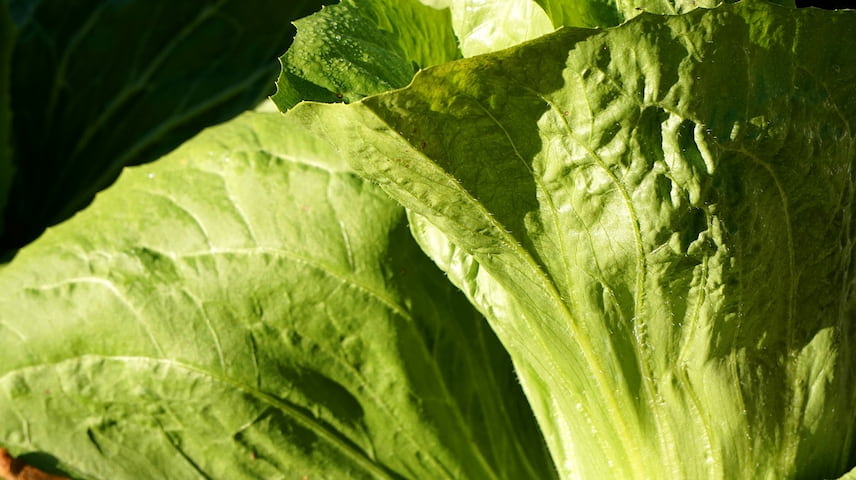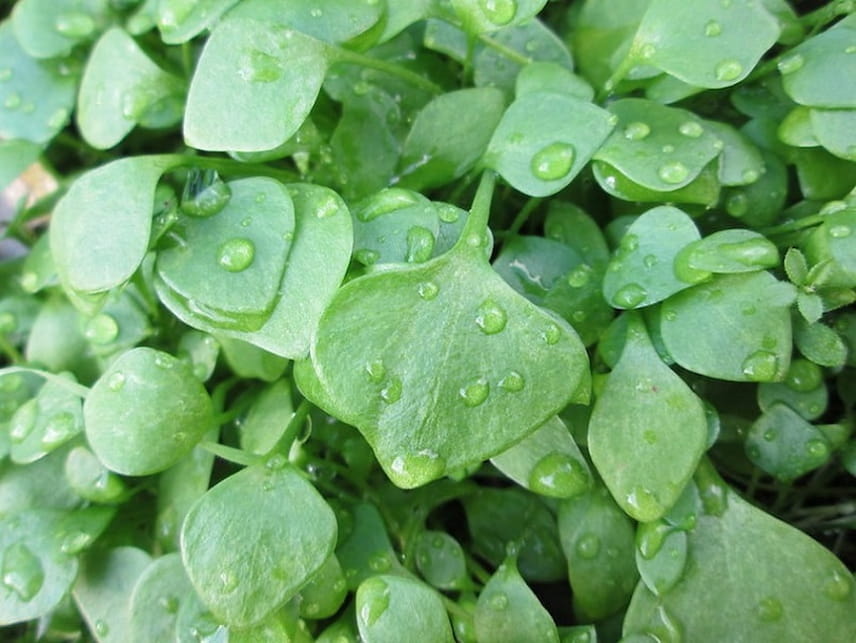
Lettuces to harvest in autumn and winter
Discover our selection of cold-hardy lettuces.
Contents
Having lettuce all year round in your vegetable patch and on your plate may seem like a pleasant dream. Indeed, in spring, growing your own lettuces seems obvious, as the mild climate and soil already warmed by the sun’s rays make it ideal, and you may think that cold and frost don’t necessarily mix well with lettuce. Think again — some varieties of lettuce are not intimidated by autumnal or winter frost. However, to enjoy good lettuces to harvest in autumn and winter, you need to plan ahead and sow from late summer. Discover with us the 20 best lettuces to harvest between October and March.
→ Also read: Being self-sufficient in lettuce all year round
Lamb's lettuce, the ultimate winter salad
Very frost-hardy, lamb’s lettuce (Valerianella locusta), also called doucette in some regions, is the salad to have in the vegetable patch in winter. Relatively easy to sow and to grow, it is undemanding about soil. Only regular watering during two weeks after planting is necessary. Lamb’s lettuce is sown from July to October depending on variety, broadcast or in rows, the key being to firm soil well.

Les variétés à privilégier :
- Verte de Cambrai : as this lamb’s lettuce does not fear cold, it is sown late in September and October. Its smooth, fairly broad leaves are a dark green.
- Coquille de Louviers : its incurved, bright green leaves tend to curl in on themselves to form a sort of spoon. It is sown from July to September.
- Verte d’Étampes : its leaves are relatively thick and dense, a lovely dark green. This is a very productive lamb’s lettuce to sow from July to September.
- Ronde maraîchère : another early, productive variety that produces round leaves. To be sown from August to September for harvest throughout winter.
→ Learn more with our full fact sheet: Lamb’s lettuce — sowing, growing and harvest and 6 varieties of lamb’s lettuce to grow in the vegetable patch
Read also
Salads: buyer's guideThe large family of chicories — deliciously bitter salads
Rather vigorous, the chicories are not put off by a light frost. They even enjoy lazing in the vegetable garden in autumn and winter. For these young ladies dislike heat and sun. They are characterised by a certain bitterness of their leaves, which is why some are blanched.
There are several varieties of chicory: escaroles (Cichorium endivia var. latifolium), frisée (Cichorium endivia crispum) and wild chicories (Cichorium intybus). Some are less tender.
Escaroles ideal for autumn and winter
- The Cornet de Bordeaux: this escarole, resistant to winter chill, produces crisp, rather upright leaves that form a cone. Sowing in June and July for a harvest in November and December.
- The Diva: its leaves blanch naturally and are particularly crunchy. It reaches 30 to 40 cm in diameter. Sowing from June to September for a harvest from September to December.
- The Géante Maraîchère: its tight head of pale-green leaves blanches easily. This is an early variety to sow from May to August for a mid-winter harvest.
Frisées hardy to cold
- The Fine de Ruffec: a frisée chicory grown outdoors. Its large crunchy midribs form a very tight heart. Sowing until August for a harvest up to November, or later in southern regions.
- The Wallonne: this Belgian variety is ideal for autumn and winter harvests. It tolerates frost. Its leaves are very crisp and blanch quickly. Sow from May to August for a harvest three months later.
Wild chicories with a striking appearance
- The Sugarloaf: it produces elongated heads with pale-green leaves, mildly bitter, lasting until the end of winter. Sow from June to September for an autumn and winter harvest.

Sugarloaf can be harvested until the end of winter
- The Red Treviso: this attractive Italian chicory proudly displays the bright red of its leaves. It forms attractive, slightly elongated heads. Sow in June or July for an autumn and winter harvest.
Discover other Salad leaves
View all →Available in 1 sizes
Available in 1 sizes
Available in 1 sizes
Available in 1 sizes
Available in 1 sizes
Available in 1 sizes
Available in 1 sizes
Available in 1 sizes
Available in 1 sizes
Available in 1 sizes
Lettuces, yes, but with protection
More sensitive to cold, lettuces are less suited to colder seasons because their leaves are so tender. They cannot be harvested beyond October. Other lettuces, known as winter lettuces, are sown at the end of summer to be harvested at the end of winter.

Lettuces are the most cold-sensitive salad leaves, so less suited to an autumn or winter harvest
Our selection among butterhead, batavia and romaine lettuces that may need to be covered with a winter fleece in some regions.
Butterhead lettuces that withstand cold
- Merveille des 4 saisons : its leaves slightly tinged with dark red form large heads. Sown in July, harvest continues until October.
- Appia lettuce : produces large heads of fine light-green leaves. Harvest until late October.
- Brune d’hiver winter lettuce : forms a medium, fairly firm head of red-tinted leaves. Hardy, sown until September for harvest in February.
Batavia lettuces with autumn crunch
- Gloire du Dauphiné : this old variety is recognisable by its red-flushed, glossy, crinkled leaves. Sown in September, harvest continues until November.
- Balmoral : an iceberg-type batavia forming attractive heads of leaves that are both crisp and tender in a clear green. Sow in July for harvest from September to November.
- Rouge Grenobloise : a batavia forming handsome dark-green heads edged with red. Its foliage is very crisp. Tolerates both heat and cold, so can be harvested in autumn or at the end of winter.
Romaine lettuces to rediscover
- Blonde Maraîchère : a hardy romaine with an elongated head of very crisp leaves. Harvest until November when sown at the end of summer.
⇒ Find our advice in our advice sheet : to grow lettuces under cover
Read also
How to succeed in sowing salads?Winter purslane when salads are scarce
Claytone de Cuba (Claytonia pertoliata) or winter purslane produces crisp leaves with a flavour similar to watercress. It is very cold-hardy down to −20 °C and must not be confused with summer purslane. Sow from May to harvest throughout winter.

Claytone de Cuba or winter purslane withstands very severe cold
Winter cress with a peppery flavour
This variety of winter cress (Barbarea vulgaris ‘Variegata’), recognisable by its variegated foliage, can be harvested until October. Its leaves, with a peppery flavour, are similar in taste to those of watercress.
→ Learn more about Watercress: sowing, cultivation, harvest
- Subscribe!
- Contents










































Comments